Using Office 365 on mobile devices
“Stay connected and productive on the go with Office 365 on your mobile device!”
Introduction
Office 365, a robust suite of cloud-based apps, offers a plethora of features accessible on mobile devices. These encompass email, calendar, contacts, tasks, and beyond. With Office 365, users can maintain connectivity and productivity on the move, irrespective of their location. This comprehensive guide will furnish an overview of leveraging Office 365 on mobile gadgets, encompassing setup and utilization of diverse features and tools.
Troubleshooting Common Issues with Office 365 on Mobile Devices
The prevalence of mobile devices for accessing Office 365 applications is on the rise. Nevertheless, users may encounter a gamut of issues while utilizing Office 365 on their mobile devices. In this discourse, we aim to furnish adept troubleshooting tips for mitigating these predicaments.
Firstly, in the event of sluggish performance in Office 365 applications on your mobile device, consider closing concurrently running background applications. This action will alleviate resource constraints and potentially bolster the operational acumen of Office 365. Moreover, ensure that your mobile device harbors the latest iteration of its operating system and that the latest incarnation of Office 365 is ensconced within.
Secondly, should you grapple with connectivity obstructions to Office 365, diligently verify the robustness of your tethered Wi-Fi network. In case of cellular connectivity, validate the potency of your signal. Furthermore, ascertain that your device is not entrenched in airplane mode.
Subsequently, when beset by synchronization quandaries pertaining to your Office 365 data, it behooves you to validate that the sync functionality is duly enabled within the Office 365 settings. Additionally, corroborate the uniformity of your account across all your devices.
Finally, in instances of impedance with accessing or editing Office 365 documents on your mobile device, ascertain the presence of the latest rendition of the Office 365 application. Furthermore, ensure the compatibility of your device with the Office 365 suite.
Adhering to these prescripts, you should be poised to surmount prevailing challenges when exploiting Office 365 on your mobile device. Should obstacles persist, it is recommendable to solicit succor from your IT department or Microsoft Support.
How to Secure Office 365 on Your Mobile Device
The increasing ubiquity of mobile devices in professional settings, coupled with the proliferation of cloud-based platforms like Office 365, underscores the critical need for stringent security measures. Safeguarding Office 365 on your mobile device demands attention to the following strategies:
1. Empower your defense with a robust password: Crafting a formidable shield for your Office 365 account necessitates the construction of a password comprising a blend of uppercase and lowercase letters, numbers, and special characters.
2. Imbue an extra layer of protection through two-factor authentication: Fortifying your Office 365 account with two-factor authentication fortifies your defenses by requiring the input of a code dispatched to your mobile device or email address, in addition to your password.
3. Use a secure connection: When accessing Office 365 on your mobile device, make sure to use a secure connection such as a Virtual Private Network (VPN). This will help protect your data from being intercepted by malicious actors.
4. Install security software: Install security software on your mobile device to help protect against malware and other threats. Make sure to keep the software up to date to ensure the latest security patches are applied.
5. Monitor your account: Regularly monitor your Office 365 account for suspicious activity. If you notice anything out of the ordinary, contact your IT department immediately.
By following these tips, you can help ensure that your Office 365 account is secure on your mobile device.
Exploring the Benefits of Office 365 on Mobile Devices
The increasing prevalence of mobile devices in the workplace has contributed to the rising popularity of utilizing Office 365 as a robust tool for businesses. Office 365, a cloud-based suite encompassing applications such as Word, Excel, PowerPoint, and Outlook, is engineered for seamless integration across various devices, including mobile platforms, providing an array of advantages for businesses.
Among its notable attributes, the flexibility of Office 365 on mobile devices stands out. It empowers users to effortlessly access documents and applications from any location and device, thereby enhancing productivity and fostering seamless collaboration among geographically dispersed colleagues.
Office 365 is equipped with an array of mobile-friendly features, exemplified by its dedicated mobile app facilitating document access, editing capabilities, file sharing, and email management, contributing to an enhanced user experience on mobile devices.
Additionally, Office 365 encompasses a robust suite of security features tailored for safeguarding data on mobile devices, encompassing multi-factor authentication, data encryption, and mobile device management, thereby ensuring data security even in the mobile environment.
Furthermore, Office 365 fosters seamless collaboration among colleagues through real-time document sharing, access to shared calendars and contacts, thereby fostering connectivity and teamwork across diverse locations.
In conclusion, the inherent flexibility, robust security features, and seamless collaboration capabilities position Office 365 as an indispensable solution for businesses seeking to effectively leverage the ubiquity of mobile devices in the modern workplace.
Tips for Optimizing Office 365 Performance on Mobile Devices
1. Prioritize Maintenance of Your Mobile Device: It is imperative to consistently update your mobile device with the latest software and security patches to enhance the performance of Office 365. This practice ensures access to the most current features and bug resolutions, which contribute to improved functionality.
2. Opt for Wi-Fi When Available: Opting for Wi-Fi over cellular data can significantly enhance the performance of Office 365 on mobile devices. Wi-Fi networks generally offer swifter and more consistent connections compared to cellular data, thereby mitigating latency and optimizing performance.
3. To enhance the performance of Office 365 on your mobile device, consider taking the initiative to disable superfluous applications and services. By eliminating background processes that are not in use, you can efficiently allocate resources and boost the overall functionality of Office 365.
4. Elevate the efficacy of Office 365 by clearing the cache and temporary files residing on your mobile device. This action not only liberates precious storage space but also contributes to the optimization of Office 365 performance. You can accomplish this task through the utilization of third-party applications or by manually purging these files.
5. Enhance the security and expedite the connectivity of Office 365 by integrating a virtual private network (VPN) into your mobile device. A VPN not only fortifies data encryption and shields it from potential vulnerabilities but also enhances the velocity of your connection, thereby augmenting the Office 365 experience.
6. Ensure the seamless functionality of Office 365 by vigilantly monitoring your data usage. By meticulously gauging your data consumption, you can avert the risk of surpassing your data cap and encountering deceleration in Office 365 performance. Employing third-party applications or periodically scrutinizing your data usage can aid in this endeavor.
How to Get Started with Office 365 on Your Mobile Device
Commencing the use of Office 365 on your mobile device presents an easy and expedient process. This productivity suite affords the ability to retrieve documents, emails, and assorted files at any given moment, regardless of location. To commence, follow the steps below:
1. Acquire the Office 365 application. It is compatible with both iOS and Android platforms. Post download, initiate the app and authenticate using your Office 365 credentials.
2. Configure your account. After successful authentication, you will be prompted to set up your profile, incorporate contacts, and configure your email settings.
3. Access your documents. Following the setup of your account, document retrieval from any location becomes feasible. Modification and sharing capabilities for these files are also seamlessly integrated into the mobile platform.
4. Maintain connectivity. Office 365 enables seamless communication with contacts and coworkers. It allows for email correspondence, meeting coordination, and collaborative project engagement.
5. Seek assistance. If the need arises, navigate to the Office 365 support page for tutorials, FAQs, and additional resources to optimize the utilization of Office 365.
Office 365’s accessibility and convenience allow for unrestrained access to documents, emails, and various files. The initiation process is straightforward, ensuring immediate integration of Office 365 into your mobile device.
Conclusion
Office 365 is an excellent choice for businesses that need to stay connected and productive on the go. It offers a wide range of features and tools that can be accessed from any mobile device, making it easy to stay connected and productive no matter where you are. With its cloud-based storage, collaboration tools, and mobile apps, Office 365 is an ideal choice for businesses that need to stay connected and productive on the go.
Customizing and integrating Office 365 with other applications
“Unlock the Power of Office 365: Customize and Integrate for Maximum Efficiency!”
Introduction
Office 365 is a powerful suite of applications that can be used to increase productivity and collaboration in the workplace. However, many organizations find that they need to customize and integrate Office 365 with other applications in order to get the most out of the platform. Customizing and integrating Office 365 with other applications can help organizations streamline processes, improve collaboration, and increase efficiency. This guide will provide an overview of the different ways that Office 365 can be customized and integrated with other applications, as well as the benefits of doing so.
Best Practices for Customizing Office 365 for Your Organization’s Needs
1. Establish Clear Goals: Before customizing Office 365 for your organization, it is important to establish clear goals for what you want to achieve. This will help you determine which features and tools are most important for your organization and how to best utilize them.
2. Utilize the Security Features: Office 365 offers a variety of security features that can help protect your organization’s data and ensure that only authorized users have access to it. Make sure to take advantage of these features to ensure that your data is secure.
3. Employ Automation: Office 365 presents an array of automation tools to streamline processes and economize time. Harness these tools to optimize your organization’s efficiency.
4. Fuse with Other Systems: Office 365 seamlessly integrates with diverse systems, including customer relationship management (CRM) and enterprise resource planning (ERP) systems. This consolidation simplifies processes and facilitates access to data from multiple sources.
5. Educate Your Workforce: Ensure your employees receive comprehensive training on utilizing Office 365 and its array of features. This will guarantee they can fully exploit the available tools and features.
6. Monitor Utilization: Keep track of how your employees are utilizing Office 365 to ensure they are maximizing the features available. This will enable you to pinpoint areas for improvement or modification.
7. Stay Current: Office 365 undergoes continual evolution, necessitating an awareness of the latest features and tools. This will ensure that your organization maximizes the benefit of the most recent features and tools available.
.
Exploring the Benefits of Integrating Office 365 with Cloud Storage Solutions
The integration of Office 365 with cloud storage solutions yields manifold advantages for businesses of all scales. By amalgamating the robustness of Office 365 with the pliancy of cloud storage, businesses can enhance collaboration, boost productivity, and curtail expenses.
A paramount benefit of consolidating Office 365 with cloud storage solutions is the amelioration of collaboration. Through lodging documents in the cloud, teams can retrieve and distribute pertinent files from any gadget, at any given moment. This facilitates seamless collaboration on projects, irrespective of team members’ whereabouts. Furthermore, cloud storage solutions furnish version control, enabling teams to monitor modifications and guarantee that everyone is working on the most current iteration of a document.
The fusion of Office 365 with cloud storage solutions also augments productivity. Storing documents in the cloud enables users to access them from any device, obviating the necessity to transfer files between devices. This streamlines mobile productivity and ensures constant accessibility to requisite documents. Furthermore, cloud storage solutions offer robust search functionalities, enabling users to swiftly locate the documents they require.
Integrating Office 365 with cloud storage solutions presents a myriad of advantages for businesses. By transferring documents to the cloud, businesses can minimize their dependence on physical storage mediums like hard drives and servers, consequently curbing expenses on hardware and maintenance. Furthermore, cloud storage solutions tend to be more economically viable than conventional alternatives, enabling businesses to trim down storage expenditures.
In summary, the integration of Office 365 with cloud storage solutions delivers a plethora of benefits for businesses across various scales. By amalgamating the prowess of Office 365 with the adaptability of cloud storage, businesses can enhance teamwork, elevate efficiency, and cut down on costs.
Leveraging Office 365 to Automate Business Processes
Office 365, a robust suite of cloud-based applications, empowers enterprises to automate operations and enhance productivity. Through its myriad tools, businesses can optimize processes, trim expenses, and elevate customer satisfaction.
The suite offers a diverse array of automation tools. For instance, Microsoft Flow facilitates the creation of automated workflows triggered by events or data modifications. This functionality automates tasks such as dispatching notifications, crafting documents, and updating records, thereby enhancing operational efficiency.
Beyond automation, Office 365 furnishes collaboration tools that foster seamless interaction and teamwork among teams. Take Microsoft Teams, for instance. This platform enables the creation of virtual workspaces, allowing teams to exchange files, engage in chat, and collaborate on projects, thereby bolstering cohesion and productivity.
Moreover, Office 365 delivers a suite of analytical instruments for gleaning insights into business processes. Power BI, for example, enables the development of interactive dashboards that furnish real-time performance insights, helping enterprises pinpoint areas for enhancement and make well-informed decisions.
In sum, Office 365 presents a plethora of tools for process automation and efficiency enhancement. Leveraging the capabilities of Office 365 can streamline operations, cut costs, and bolster customer service, thereby driving organizational success.
Integrating Office 365 with Third-Party Applications for Enhanced Collaboration
Office 365, a robust collection of cloud-based tools, empowers enterprises to interact and cooperate with greater efficiency. Offering a plethora of resources including email, calendar, file storage, and instant messaging, it optimizes operational processes and amplifies output. Nevertheless, the potential of Office 365 can be elevated through the integration of third-party applications. By connecting Office 365 with other applications, businesses can extend the capabilities of the suite and create a more comprehensive collaboration platform.
Integrating Office 365 with third-party applications yields multifaceted advantages. This amalgamation facilitates streamlined access to data from diverse sources, fostering enhanced collaboration and efficiency. Moreover, it empowers users to seamlessly retrieve data across various devices, bolstering connectivity and productivity on the move.
The fusion of Office 365 with third-party applications not only streamlines operations, but also yields substantial time and cost efficiencies. By integrating with other applications, businesses can mechanize tasks and curtail manual efforts, culminating in substantial cost reductions. Furthermore, this integration fortifies security measures by housing data in a resilient cloud environment.
The process of integrating Office 365 with third-party applications is ergonomically simple. Leveraging the Office 365 API empowers developers to fashion custom applications that engage with Office 365 data. Alternatively, businesses can harness third-party services like Zapier to orchestrate the assimilation.
This confluence not only enriches collaboration tools but also augments overall productivity. It centralizes data accessibility, automates processes, and fortifies security measures. Additionally, this integration process is facilitated through the Office 365 API or third-party services, rendering it a manageable endeavor.
How to Use Office 365 to Create Customized Workflows
Office 365 provides a robust array of tools to enhance operational efficiency and elevate productivity for businesses. Leveraging its adaptable workflows, Office 365 facilitates process automation, diminishes manual workload, and amplifies collaborative efforts. In this exposition, we will explore the utilization of Office 365 in crafting personalized workflows.
Commence by discerning the processes earmarked for automation. Consider tasks that are labor-intensive or entail multiple steps. Once earmarked, proceed to construct a workflow within Office 365.
Constructing a workflow mandates the utilization of the Workflow Designer. This graphical instrument empowers the creation and modification of workflows. Tasks can be integrated, roles assigned, and conditions stipulated for workflow initiation. Furthermore, notifications can be incorporated to prompt users upon task completion or workflow activation.
Once you’ve created the workflow, you can test it to make sure it works as expected. You can also publish the workflow so that it’s available to all users.
Finally, you can monitor the workflow to make sure it’s running smoothly. You can view the status of each task, as well as the overall progress of the workflow. You can also use the analytics feature to track the performance of the workflow and identify areas for improvement.
By using Office 365 to create customized workflows, businesses can save time and money, while improving collaboration and productivity. With its powerful tools and features, Office 365 can help businesses streamline their operations and increase efficiency.
Conclusion
Customizing and integrating Office 365 with other applications is a great way to maximize the potential of the Office 365 suite. It allows users to customize their Office 365 experience to meet their specific needs and to integrate with other applications to create a more efficient and productive workflow. With the right customization and integration, Office 365 can be a powerful tool for businesses of all sizes.
Delete items from Preservation hold library in SharePoint online
Hi All,
I was struggle for few days to remove/delete content from preservation hold library in SharePoint Online. If you check online or ask Bing chat engine(Chat GPT), you will get response at the end of the page but actually it doesn’t help, still I have shared those details as they are needed to be followed to make sure we don’t have any hold from Admin center.
You need to make sure you follow below steps in addition to release all holds from admin center which are not documented in any article I could find.
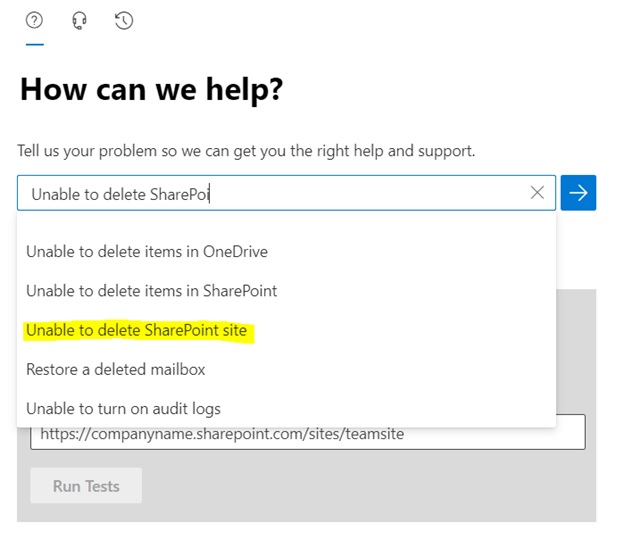
2. Then on this window search for ‘Unable to delete SharePoint site’
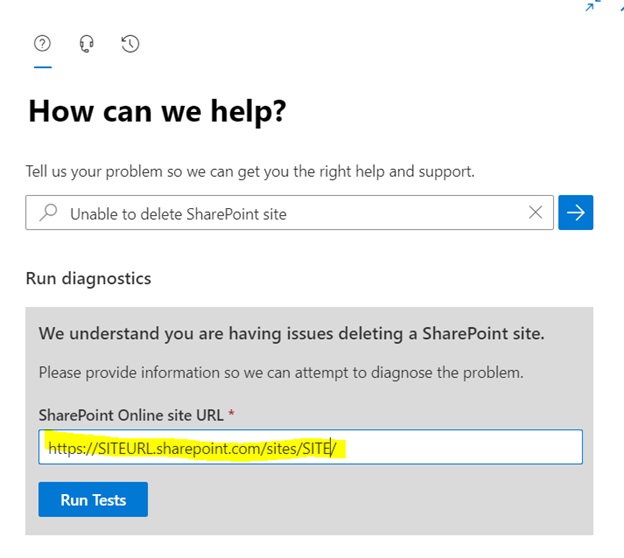
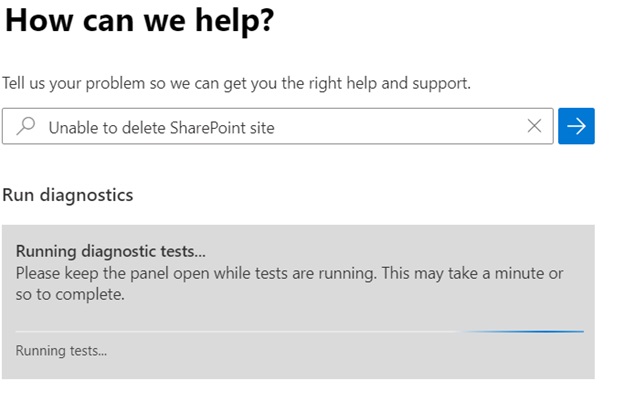
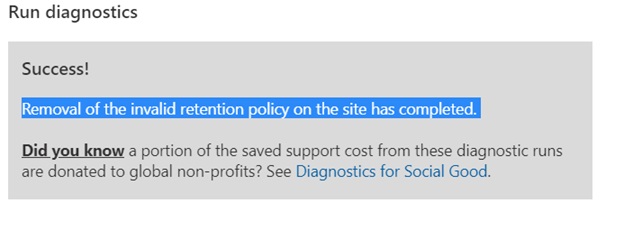

$SiteURL = "https://customersite.sharepoint.com/sites/site"
$ListName = "Preservation Hold Library"
#Connect to PnP Online
Connect-PnPOnline -Url $SiteURL -Interactive
#Delete all files from the library
Get-PnPList -Identity $ListName | Get-PnPListItem -PageSize 100 -ScriptBlock {
Param($items) Invoke-PnPQuery } | ForEach-Object { $_.Recycle() | Out-Null
}
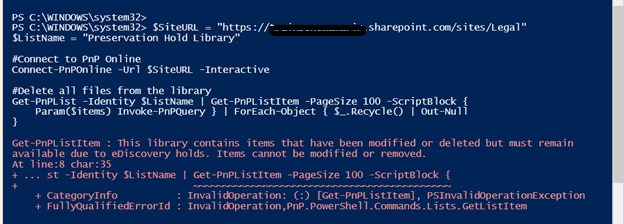
Get-PnPListItem : This library contains items that have been modified or deleted but must remain
available due to eDiscovery holds. Items cannot be modified or removed.
At line:8 char:35
To remove hold on the Preservation, hold library in SharePoint Online, you can follow these steps:
- Go to Microsoft Purview Compliance Portal as a global admin.
- If you have any Retention Policies – Exclude the site from the retention policy.
- If you have eDiscovery cases – Close all eDiscovery cases.
- If you have Data loss prevention policies – Disable them.
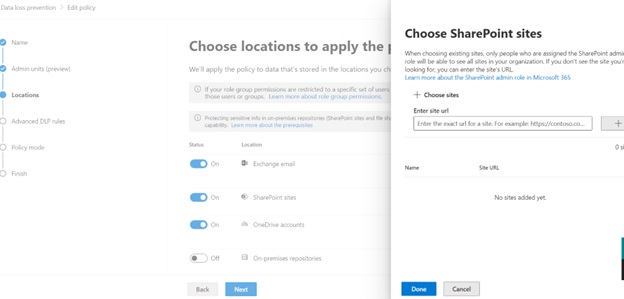
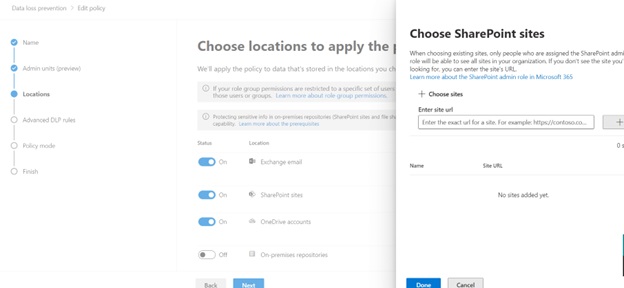
To exclude a site from the retention policy in SharePoint Online, you can follow these steps:
- Go to Microsoft Purview Compliance Portal as a global admin
- Select “Exclude Sites”
- Enter the URL of the site that you want to exclude, and then select the plus (+) button
- Select the check box for the site. You can add other sites if you want
- After you enter all the sites that you want to exclude, select “Exclude” at the bottom of the window to confirm the changes
- Select “Save”
Using Office 365 for information protection and classification
“Secure Your Data with Office 365: Protect and Classify Your Information with Confidence.”
Introduction
Office 365, a resilient cloud-based platform, provides organizations with a wide range of tools for protecting and organizing information. It enables organizations to protect their data from unauthorized access, detect and respond to threats, and classify data based on its level of sensitivity. With Office 365, organizations can verify the security and compliance of their data according to industry standards. This guide will delve into the diverse capabilities and possibilities of Office 365 for safeguarding and categorizing information.
How to Leverage Office 365 for Data Protection and Classification in Your Organization
The protection and organization of data are crucial components of a company’s security framework. As businesses transition to cloud platforms, ensuring the security and accurate categorization of data becomes essential. Microsoft Office 365 provides a wide range of tools to help organizations secure and classify their data.
Office 365 offers various features for safeguarding and categorizing data, aimed at guaranteeing its security. These include encryption, data loss prevention (DLP), and data classification mechanisms.
Encryption is a critical part of data protection. Office 365 implements encryption protocols for data both at rest and in transit, ensuring that only authorized users can access the data.
Data loss prevention (DLP) acts as a safeguard against unauthorized access to sensitive data. Office 365 includes a suite of DLP capabilities, such as detecting and preventing the unauthorized dissemination of sensitive data.
Data classification is crucial for a robust security strategy. Office 365 provides tools to help organizations classify their data, including labeling, content-based classification, and establishing access controls based on data classification.
By leveraging the data protection and classification capabilities within Office 365, organizations can strengthen the security and proper categorization of their data. This enhances the resilience of their data against unauthorized access and ensures its prudent use.
Best Practices for Using Office 365 for Information Protection and Classification
Devise a comprehensive plan to effectively deploy Office 365 for securing and organizing data. This plan must include guidelines for classifying data, outlining who is responsible for categorizing it, and implementing measures to safeguard it.
Utilize Office 365’s built-in security features such as data loss prevention (DLP), encryption, and multi-factor authentication. These powerful tools fortify data protection and limit access to sensitive information to authorized users.
Train employees thoroughly on the criticality of safeguarding and categorizing information. Ensure their comprehension of the policy and adeptness in utilizing the security features inherent in Office 365.
Vigilantly oversee access to sensitive data, guaranteeing that only authorized personnel are granted entry.
Conduct periodic audits of data to validate its correct classification and fortification.
Employ fitting labels to categorize data and ascertain its adequate protection.
Implement suitable permissions to govern access to sensitive data.
Enforce appropriate retention policies to prevent unnecessary data retention.
Regularly scrutinize activity to forestall data misuse or unauthorized access.
Consistently update software to apply the latest security patches and fortify defenses against emerging threats.
By meticulously adhering to these best practices, organizations can ensure the diligent protection and classification of their data while leveraging the Office 365 platform.
Exploring the Benefits of Office 365 for Data Protection and Classification
The preservation and categorization of data stand as paramount considerations for any enterprise. The evolution of technology also brings forth an array of perils to data integrity. Office 365 offers an extensive range of instruments designed to safeguard and label data, thereby guaranteeing the security and adherence of businesses.
Office 365 encompasses an array of data protection attributes aimed at warding off unauthorized access. These encompass encryption, multi-factor authentication, and data loss prevention mechanisms. Encryption serves to render data impervious and incomprehensible to anyone devoid of the requisite credentials. Multi-factor authentication necessitates users to provide additional corroborative elements, such as a code dispatched to their mobile device, before gaining access to data. Data loss prevention serves the purpose of forestalling inadvertent or malicious erasure or alteration of data.
Additionally, Office 365 furnishes an assortment of utilities to facilitate the categorization of data. These utilities enable businesses to classify data in accordance with its sensitivity and significance, ensuring appropriate storage and access protocols. For instance, confidential data can be designated as such, accessible solely to authorized personnel. This framework assures that data remains secure and complies with regulatory standards.
In addition to data protection and classification, Office 365 also provides a range of other features to help businesses remain secure and compliant. These features include advanced threat protection, mobile device management, and compliance management. Advanced threat protection helps to protect against malicious attacks, while mobile device management helps to ensure that devices are secure and compliant. Compliance management helps to ensure that businesses remain compliant with regulations and industry standards.
In summation, Office 365 offers a comprehensive suite of tools to fortify data protection and classification. Not only do these tools assure the security and compliance of businesses, but they also deliver a diverse range of additional features to fortify the security and adherence of enterprises.
How Office 365 Can Help You Classify Your Data for Compliance
Office 365, a robust collection of cloud-based applications, empowers organizations to systematically categorize their data for compliance adherence. Through Office 365, organizations can effortlessly establish and administer data classification policies customized to their unique compliance specifications.
The suite encompasses an array of functionalities tailored to facilitate data classification for compliance. Notably, Office 365’s Data Loss Prevention (DLP) feature enables the formulation of policies for identifying, monitoring, and safeguarding sensitive data. Leveraging DLP, organizations can categorize data based on its content, context, and sensitivity, bolstering the assurance that their data is appropriately classified and shielded.
Further augmenting its utility, Office 365 furnishes an assortment of tools for administering data classification policies. For instance, the Compliance Manager within Office 365 empowers organizations to create, oversee, and monitor data classification policies through an intuitive dashboard, ensuring adherence to established guidelines.
Moreover, Office 365 integrates a suite of security features to fortify data protection. The Advanced Threat Protection feature equips organizations to detect and counteract malicious activities, while furnishing encryption and auxiliary security measures to prevent unauthorized data access.
In essence, Office 365 offers a comprehensive array of features to streamline data classification for compliance. By harnessing these capabilities, organizations can safeguard the proper classification and fortification of their data.
How Office 365 Can Help You Protect Your Sensitive Data
Office 365, a robust suite of cloud-based applications, offers formidable means to safeguard your sensitive data. With Office 365 at your disposal, you can effortlessly store, share, and govern your data within a fortified environment.
The suite boasts an array of security features poised to fortify your data assets. These encompass encryption, data loss prevention, and multi-factor authentication. Encryption serves as a protective shield, rendering data accessible only to authorized users. Meanwhile, data loss prevention shields against inadvertent or malicious data erasure. Moreover, multi-factor authentication acts as a gatekeeper, ensuring that only sanctioned users can access your data.
Office 365 further equips users with myriad tools to vigilantly oversee and administer their data. Users can employ Office 365 to trace data access, surveil data activity, and establish alerts for potential irregularities. Additionally, Office 365 facilitates the implementation of data retention policies to ensure data security and compliance with industry regulations.
Finally, Office 365 provides a range of tools to help you back up and restore your data. You can use Office 365 to back up your data to the cloud, so that it is always available in the event of an emergency. You can also use Office 365 to restore your data from a previous version, so that you can recover any lost or corrupted data.
By taking advantage of the security features and tools provided by Office 365, you can help protect your sensitive data and ensure that it is kept secure and compliant with industry regulations.
Conclusion
Office 365 provides a comprehensive set of tools for information protection and classification. It allows organizations to protect their data from unauthorized access, while also providing the ability to classify and label data for easier management. With Office 365, organizations can ensure that their data is secure and properly managed, while also providing the ability to quickly and easily access the data they need. This makes Office 365 an ideal solution for organizations looking to protect and manage their data.
Using Office 365 for eDiscovery and legal holds
“Unleash the Potential of Office 365 for eDiscovery and Legal Holds – Effectively Manage Your Data and Maintain Compliance.”
Introduction
Office 365, a robust cloud-based platform, offers organizations a diverse array of tools and services for efficient data management. A pivotal feature of Office 365 lies in its capacity to facilitate eDiscovery and legal holds, critical processes in the realm of electronic information management. eDiscovery involves the collection, preservation, and analysis of electronically stored information (ESI) for utilization in legal proceedings, while legal holds entail the preservation of ESI pertinent to legal matters. Office 365 furnishes a comprehensive suite of tools and services to streamline organizations’ eDiscovery and legal holds processes. This article aims to present an overview of Office 365’s utilization for eDiscovery and legal holds.
Best Practices for Managing eDiscovery and Legal Holds with Office 365
1. Establish a Legal Hold Process
The initial stage in handling eDiscovery and legal holds using Office 365 involves establishing a rigorous legal hold process. This entails clearly defining the circumstances under which a legal hold is warranted, identifying the party responsible for implementing the hold, and outlining the communication protocol for notifying affected individuals. Additionally, there must be a mechanism for monitoring the hold, encompassing its initiation, notification recipients, and cessation.
2. Utilize Office 365’s eDiscovery Tools
Office 365 offers an array of eDiscovery tools for overseeing eDiscovery and legal holds. Such utilities encompass the eDiscovery Center, enabling users to search for and safeguard content, and the Compliance Center, serving as a central hub for legal hold administration. Deploying these tools can significantly streamline the eDiscovery process and guarantee comprehensive preservation of pertinent content.
3. Educate Staff on Legal Holds Ensuring that all staff members are well-versed in the legal hold protocol and their obligations upon initiation is paramount. Training should encompass an overview of the legal hold process and guidelines on responding to a legal hold. Moreover, employees should be fully cognizant of the repercussions of non-compliance with a legal hold. 4. Supervise Adherence to Regulations Following the initiation of a legal hold, meticulous monitoring of adherence is crucial to confirm compliance across all affected parties. This necessitates regular scrutiny of the Compliance Center to ascertain that all implicated individuals have been duly informed and that all relevant content has been conserved.
5. Document the Process
Finally, it is important to document the entire legal hold process. This includes documenting when the hold was initiated, who was notified, and when the hold was lifted. This documentation can be used to demonstrate compliance with the legal hold process and can help protect the organization in the event of a dispute.
How to Set Up an Effective eDiscovery Process with Office 365
Establishing a robust eDiscovery process within Office 365 can pose a significant challenge. However, with careful implementation of appropriate procedures and tools, the task can be executed promptly and effectively. This comprehensive guide delineates the overall process and essential initial steps required for commencement.
The cornerstone of setting up an efficient eDiscovery process with Office 365 entails the establishment of an eDiscovery Center. Serving as a central locus for all eDiscovery activities, it forms the foundational gateway for any eDiscovery undertaking. The eDiscovery Center facilitates the management and oversight of all eDiscovery operations, encompassing searches, holds, and exports.
Subsequently, the pivotal next phase involves crafting an eDiscovery search, constituting a specific inquiry designed to retrieve pertinent data within Office 365. Searches can be formulated utilizing keywords, phrases, or even specific file formats. Following the search formulation, it becomes imperative to impose holds on the identified data, ensuring its preservation from deletion or alteration.
The subsequent imperative step necessitates the extraction of the located data, achievable through a diverse array of formats encompassing PST, EML, and HTML. Once exported, the data undergoes a phase of review and analysis.
To culminate, the eDiscovery Center assumes the role of monitoring the progression of the eDiscovery process. Its function encompasses tracking the advancement of searches, holds, and exports. This vigilance ensures the seamless operation of the process and the meticulous preservation and analysis of all pertinent data.
By meticulously observing these procedural strategies, the establishment of an effective eDiscovery process within Office 365 is swiftly and effortlessly realized. With the appropriate tools and processes at the helm, the preservation and accurate analysis of all data is assured, thereby safeguarding the organization against potential legal jeopardy and ensuring the meticulous handling of all data.
Understanding the Role of Office 365 in eDiscovery
Office 365 is gaining traction as a widely adopted cloud-based solution catering to organizations of diverse scopes. It offers an extensive array of applications facilitating communication, teamwork, and efficiency. Consequently, it is assuming an increasingly pivotal role in the realm of eDiscovery.
Notably, eDiscovery, an abbreviation for electronic discovery, encompasses the procedures of gathering, safeguarding, and presenting electronically stored information (ESI) for legal purposes. It constitutes a pivotal facet of the litigation trajectory, underscoring the necessity for establishments to possess adept mechanisms to uphold conformity with eDiscovery directives.
The multifaceted array of advantages offered by Office 365 renders it an optimal solution for eDiscovery. Its diverse storage options encompass Exchange Online, SharePoint Online, and OneDrive for Business, enabling organizations to securely centralize their Electronically Stored Information (ESI).
Moreover, Office 365 furnishes a plethora of tools for searching and analyzing ESI, such as the eDiscovery Center for comprehensive ESI search and review, and the Compliance Search feature, facilitating precise keyword and phrase searches.
Furthermore, Office 365 streamlines the production of ESI for legal proceedings by allowing exportation to various formats and facilitating the redaction of sensitive information.
In essence, Office 365 stands as an increasingly indispensable asset for eDiscovery, offering an all-encompassing toolkit for ESI storage, search, and production, making it the platform of choice for organizations striving to adhere to eDiscovery mandates.
The Benefits of Using Office 365 for Legal Holds
Office 365 stands as a robust and adaptable cloud-based platform, offering an array of services and tools tailored to assist businesses in effectively overseeing their operations, irrespective of their scale. A pivotal attribute of this platform is its capacity to facilitate legal holds, a cornerstone of any enterprise’s compliance and risk management strategy. Office 365 furnishes a secure and dependable environment for administering such imperative measures.
Legal holds serve the purpose of safeguarding pertinent documents and data in the event of a legal dispute or investigation, constituting a vital component of an organization’s compliance and risk management framework. They are instrumental in ensuring the preservation and accessibility of all pertinent materials for scrutiny. Office 365, through its secure and dependable platform, empowers organizations to streamline the setup and management of legal holds across their entire realm swiftly and seamlessly.
With Office 365’s legal hold feature, organizations gain the ability to expeditiously establish and oversee holds across their entire domain. This encompasses a centralized platform for the management of holds, bolstering organizational capacity to effortlessly monitor and trace holds, while also configuring notifications for impending hold expirations. This functionality proves instrumental in guaranteeing the retention and accessibility of essential documents and data for evaluation.
Office 365 also provides a secure platform for managing legal holds. All documents and data stored in Office 365 are encrypted, ensuring that they remain secure and confidential. This helps organizations protect their data and ensure that it is not accessed or used without their permission.
Finally, Office 365’s legal hold feature is easy to use and cost-effective. It is a cloud-based platform, so there is no need to purchase or maintain additional hardware or software. This makes it an ideal solution for organizations of all sizes, as it is both cost-effective and easy to use.
In summary, Office 365 provides a secure and reliable platform for managing legal holds. It allows organizations to quickly and easily set up and manage holds across their entire organization, while also providing a secure platform for storing and protecting documents and data. Additionally, it is easy to use and cost-effective, making it an ideal solution for organizations of all sizes.
How Office 365 Can Help Streamline Your eDiscovery Process
The intricate realm of eDiscovery, also known as electronic discovery, encompasses the intricate process of procuring, safeguarding, and presenting electronically stored information (ESI) for legal proceedings. In a landscape where the volume of ESI burgeons, organizations seek a dependable and effective approach to govern the process. Office 365 emerges as a facilitator, artfully streamlining the eDiscovery endeavor with its secure platform for ESI collection, preservation, and production.
Within Office 365, a secure bastion for ESI collection from diverse sources such as emails, documents, and cloud-stored data materializes. The platform offers a fortified milieu for ESI preservation, ensuring its integrity and protection from tampering or obliteration during the eDiscovery phase.
Moreover, Office 365 furnishes a secure stage for ESI production in versatile formats like PDF, HTML, and XML, permitting swift and seamless presentation of ESI in legal proceedings.
Effectuating an impeccable eDiscovery orchestration, Office 365 furnishes a suite of tools, including a potent search utility for rapid and effortless ESI retrieval. This feature expedites the identification and location of pertinent ESI, expediting their deployment in legal proceedings.
Furthermore, Office 365 equips organizations with an array of tools to deftly oversee the eDiscovery process. This includes a workflow tool, empowering organizations to craft and regulate eDiscovery workflows to ensconce a prompt and efficient eDiscovery process.
In sum, Office 365 not only provides a secure enclave for ESI collection, preservation, and production but also furnishes an arsenal of tools to expedite and refine the eDiscovery process. By leveraging Office 365, organizations ensure the expeditious and efficient conclusion of the eDiscovery phase.
Conclusion
Office 365 stands as a robust resource for eDiscovery and legal holds. It furnishes a secure, dependable, and economical means to store and oversee data for legal purposes. Additionally, it presents a diverse array of features and tools to aid organizations in overseeing their eDiscovery and legal holds procedures. Through Office 365, organizations can effortlessly retrieve and scrutinize data, establish legal holds, and guarantee adherence to relevant statutes and standards. In conclusion, Office 365 is an ideal solution for organizations looking to streamline their eDiscovery and legal holds processes.
Using Office 365 to meet compliance requirements (e.g. GDPR, HIPAA)
“Ensuring Compliance with Office 365: Effectively Managing Data Security and Fulfilling Obligations”
Introduction
Deploying Office 365, a robust cloud-centric platform, empowers organizations to meet their multifaceted compliance mandates. This sophisticated suite offers an array of tools and services to aid adherence to stringent regulations like the General Data Protection Regulation (GDPR) and the Health Insurance Portability and Accountability Act (HIPAA). It furnishes a secure ecosystem for data storage and administration, boasting features for surveillance, audit trails, and data encryption, coupled with safeguards like data loss prevention and multi-factor authentication, all imperative for fortifying data protection and regulatory alignment. Herein, we delve into how Office 365 augments organizational compliance efforts.
How Office 365 Can Help You Manage and Monitor Compliance Requirements
Office 365 encompasses an arsenal of cloud-based utilities that adeptly facilitate oversight and management of compliance prerequisites. By leveraging Office 365, establishments can seamlessly fashion, archive, and disseminate documents, emails, and assorted information within a secure and compliance-driven milieu.
The suite proffers a comprehensive array of compliance resources to underpin organizations in aligning with regulatory stipulations. Evidently, Office 365 encompasses pivotal features, including data loss prevention (DLP) and encryption, which are pivotal in fortifying data security and ensuring confluence with data privacy statutes. Moreover, Office 365 integrates advanced auditing and reporting capabilities, which ameliorate operational oversight and fortify adherence to internal policies.
Moreover, Office 365 integrates an array of tools to streamline compliance management. Notably, the suite incorporates a sophisticated Compliance Manager, instrumental in evaluating compliance status and identifying potential risk domains. Furthermore, the presence of a Compliance Scorecard enriches the suite, allowing for meticulous tracking of compliance progress over time.
Furthermore, Office 365 furnishes a diverse set of tools to proactively address compliance exigencies. Notably, the suite integrates a multifaceted Compliance Center that expedites identification and resolution of compliance complications. Additionally, the inclusion of a dynamic Compliance Dashboard empowers real-time surveillance of compliance posture.
In summation, Office 365 stands as a formidable suite of tools enabling comprehensive management and oversight of compliance prerequisites. Beyond the seamless creation, storage, and dissemination of information, Office 365 offers a suite of tools catering to compliance posture assessment, progress tracking, and agile response to compliance exigencies.
Best Practices for Using Office 365 to Ensure Compliance with Data Protection Regulations
1. Establish a Data Governance Plan: Establishing a data governance plan is essential for ensuring compliance with data protection regulations. This plan should include policies and procedures for data classification, access control, data retention, and data security.
2. Implement Multi-Factor Authentication: Multi-factor authentication (MFA) is a security measure that requires users to provide two or more pieces of evidence to verify their identity. This helps to protect against unauthorized access to Office 365 data.
3. Monitor User Activity: Monitoring user activity is important for ensuring compliance with data protection regulations. Office 365 provides tools for monitoring user activity, such as the Office 365 Security & Compliance Center.
4. Encrypt Data: Encrypting data is an important security measure for protecting sensitive data. Office 365 provides tools for encrypting data, such as Azure Information Protection.
5. Use Data Loss Prevention (DLP): Data loss prevention (DLP) is a security measure that helps to prevent the accidental or intentional loss of sensitive data. Office 365 provides tools for implementing DLP, such as the Office 365 Security & Compliance Center.
6. Implement Access Controls: Access controls are an important security measure for ensuring that only authorized users can access sensitive data. Office 365 provides tools for implementing access controls, such as Azure Active Directory.
7. Monitor Third-Party Access: Monitoring third-party access is important for ensuring compliance with data protection regulations. Office 365 provides tools for monitoring third-party access, such as the Office 365 Security & Compliance Center.
8. Train Employees: Training employees on data protection regulations and best practices is essential for ensuring compliance. Office 365 provides tools for training employees, such as Microsoft Teams.
9. Regularly Audit Data: Regularly auditing data is important for ensuring compliance with data protection regulations. Office 365 provides tools for auditing data, such as the Office 365 Security & Compliance Center.
Understanding the Security Features of Office 365 to Meet Compliance Requirements
Office 365, a suite of cloud-based productivity tools, presents organizations with a reliable platform for collaboration and communication. As the trend of cloud migration continues to expand, it becomes increasingly essential for organizations to comprehend the security components of Office 365 to synchronize with regulatory standards.
The security facets of Office 365 encompass a diverse array of measures facilitating organizations in fulfilling compliance requisites. These encompass data loss prevention (DLP), multi-factor authentication (MFA), encryption, and identity and access management (IAM).
Data Loss Prevention (DLP) serves as a protective mechanism assisting organizations in shielding sensitive data from unauthorized access or inadvertent disclosure. It effectively detects and obstructs the transmission of sensitive information, for instance, credit card numbers or Social Security numbers, through email or other communication channels.
Multi-Factor Authentication (MFA) stands as a security attribute mandating users to present two or more authentication elements to verify their identity. This significantly enhances the assurance that solely authorized personnel can access sensitive data and applications.
Encryption, a pivotal security feature, safeguards data from unauthorized access by transforming it into a format decipherable solely by authorized users. Office 365 incorporates encryption protocols for data at rest, in transit, and in use.
Identity and Access Management (IAM) emerges as a critical feature aiding organizations in regulating user access to data and applications. It empowers entities to govern access rights, ensuring designated individuals have appropriate data and application access, while also monitoring user activity.
A thorough grasp of Office 365’s security features enables organizations to fortify the security and compliance of their data and applications. These functionalities not only shield data from unauthorized access but also ensure that solely authorized personnel can access sensitive data and applications.
How Office 365 Can Help You Meet HIPAA Compliance Requirements
Office 365 is a cloud-based suite of services that can help organizations meet the requirements of the Health Insurance Portability and Accountability Act (HIPAA). HIPAA is a federal law that sets standards for the protection of sensitive patient health information. It requires organizations to implement safeguards to protect the privacy and security of this information.
Office 365 offers a range of tools to assist organizations in meeting the rigorous demands of HIPAA compliance. These encompass:
1. Encryption: Office 365 furnishes robust encryption for data both at rest and in transit, shielding it from unauthorized intrusion.
2. Access Control: Through its access control functionalities, Office 365 empowers organizations to regulate access to sensitive data, thereby mitigating the risk of unauthorized exposure.
3. Auditing and Reporting: By facilitating meticulous auditing and reporting capabilities, Office 365 enables organizations to monitor user activities closely and proactively identify potential security vulnerabilities.
4. Data Loss Prevention: Office 365’s sophisticated data loss prevention features provide a safeguard against inadvertent or deliberate leakage of sensitive data.
5. Office 365 offers multi-factor authentication, demanding users to provide extra verification like a mobile code or a biometric scan. This add-on security measure guarantees only authorized users can access the data.
By utilizing the features of Office 365, organizations can help ensure that they are meeting the requirements of HIPAA and protecting the privacy and security of sensitive patient health information.
How Office 365 Can Help You Meet GDPR Compliance Requirements
The General Data Protection Regulation (GDPR) is a framework designed to safeguard the personal information of European Union (EU) citizens. For businesses, adhering to GDPR guidelines is crucial. Office 365 can facilitate GDPR compliance by offering a secure infrastructure for data storage and administration.
Within Office 365, data is safeguarded within a secure environment. Encryption and multi-factor authentication fortify data stored in the platform, granting exclusive access to authorized individuals. In addition to the safeguarding measures, Office 365 furnishes an array of tools for data oversight. These instruments empower businesses to regulate data access, craft usage policies, and dictate data sharing parameters.
Moreover, Office 365 is equipped with functionalities that align with GDPR compliance criteria. Notably, the Data Loss Prevention (DLP) feature bolsters security by identifying and mitigating unauthorized dissemination of sensitive data. Further enhancing data security, the Rights Management Service (RMS) within Office 365 empowers users to control data access and usage.
Furthermore, Office 365 encompasses tools for monitoring and auditing data usage. These utilities enable comprehensive tracking of data access and utilization, ensuring alignment with GDPR provisions.
Overall, Office 365 furnishes a secure data management platform that aids in achieving GDPR compliance. Its comprehensive suite of data management tools not only fortifies data security but also assures adherence to GDPR regulations, promoting a robust foundation for data governance.
Conclusion
Office 365 offers robust capabilities for organizations aiming to adhere to stringent compliance standards like GDPR and HIPAA. It furnishes a secure infrastructure for housing and disseminating data, alongside a diverse array of functions that assist entities in fulfilling their compliance responsibilities. Leveraging Office 365 empowers organizations to safeguard their data and ensure alignment with current regulations, rendering it an optimal selection for meeting compliance needs.
SharePoint PowerShell to identify all OneDrive sites and migrate content to SharePoint sites
I wanted to perform migration of few of my users content to their respective OneDrive site. To do so, I used below PowerShell to identify URL of all users who already have a OneDrive sites and then used FileMigration wizard to import their content in the respective OneDrive Site.
$TenantUrl = Read-Host "https://tenantname-admin.sharepoint.com/"
$LogFile = [Environment]::GetFolderPath("Desktop") + "\OneDriveSites.log"
Connect-SPOService -Url $TenantUrl
Get-SPOSite -IncludePersonalSite $true -Limit all -Filter "Url -like '-my.sharepoint.com/personal/'" | Select -ExpandProperty Url | Out-File $LogFile -Force
Write-Host "Done! File saved as $($LogFile)."
Note : Note agent should be installed on a system which should have access to the files through network drive we want to migrate
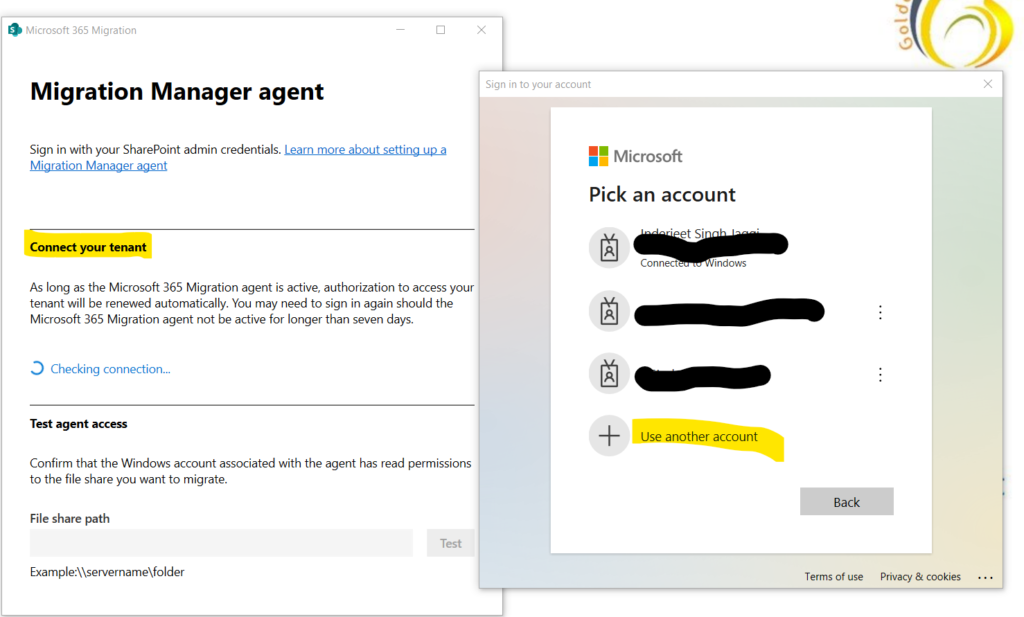
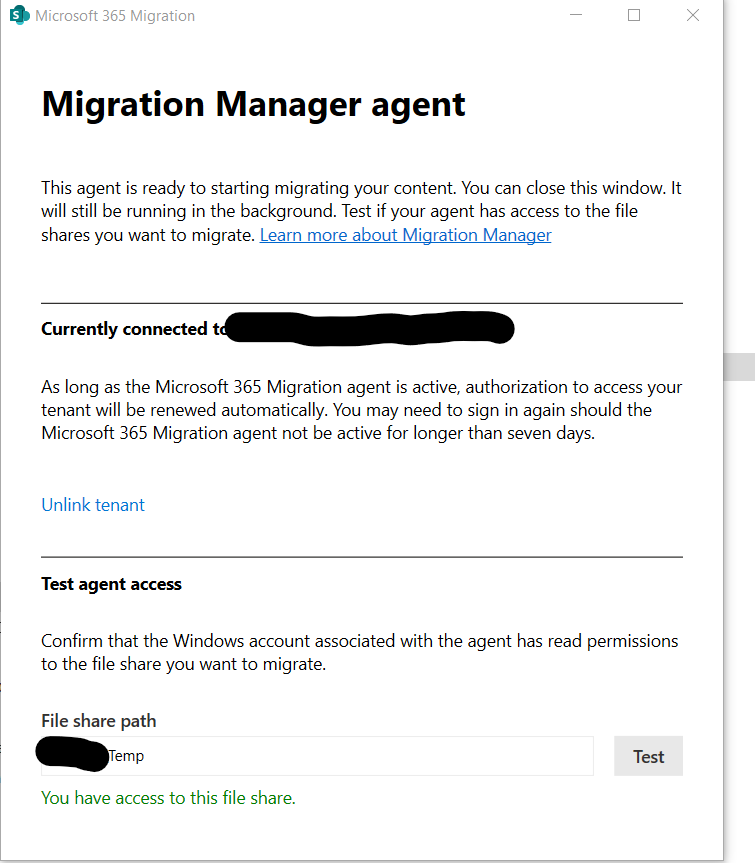
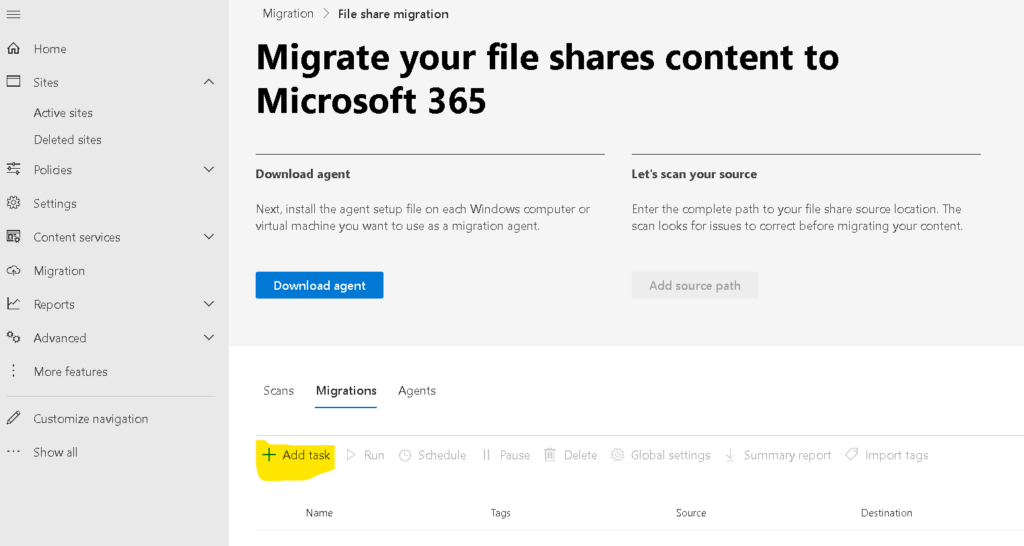
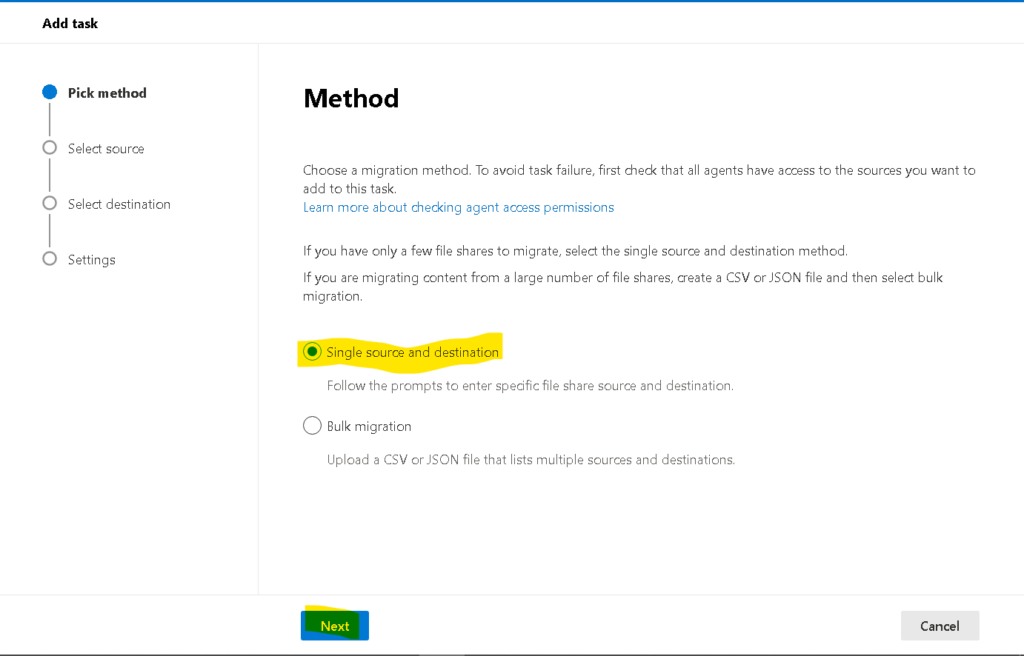
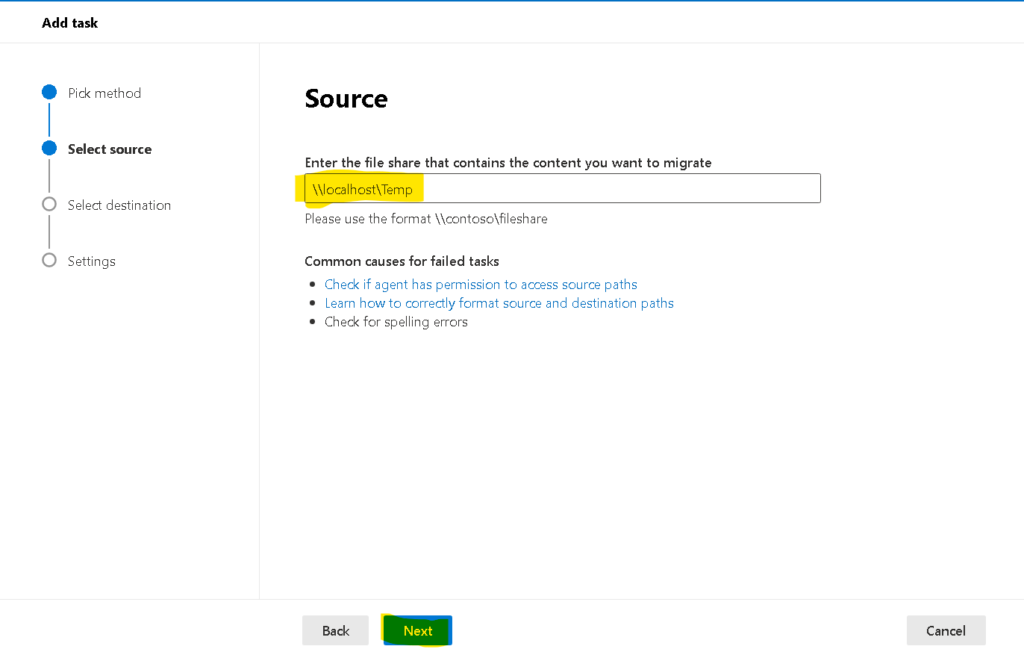

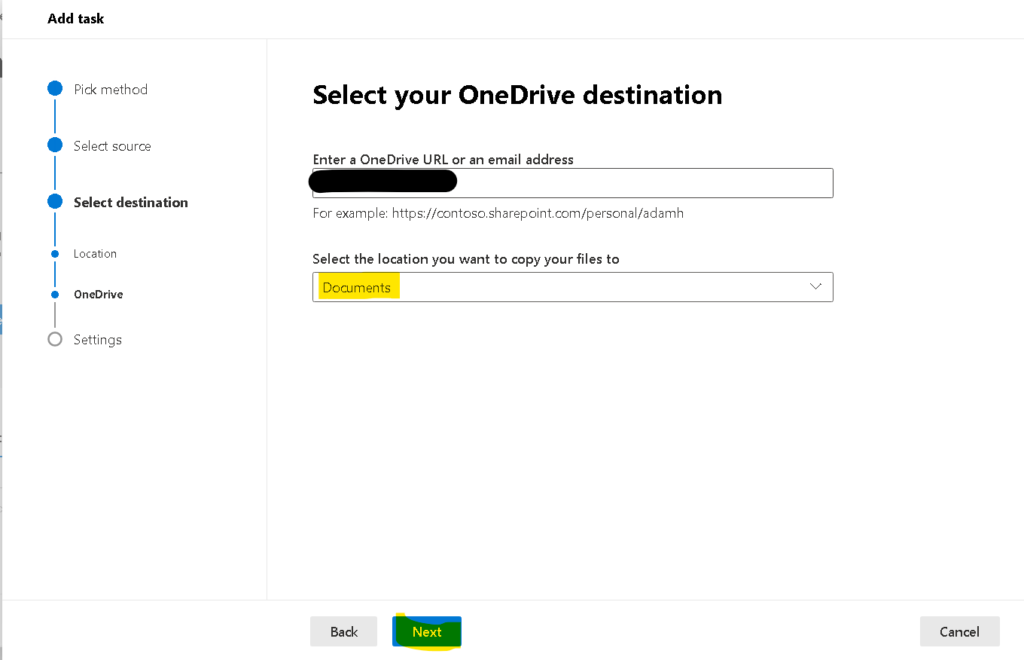
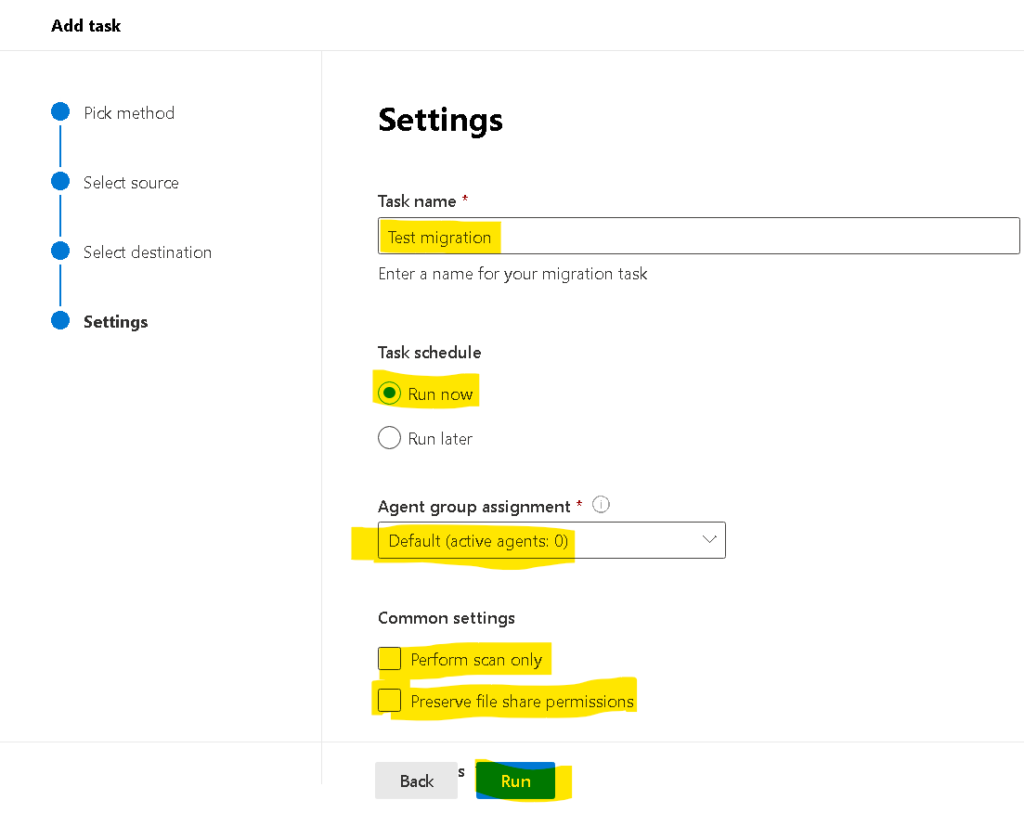
PowerShell to find duplicate files on SharePoint online site
You can use below PowerShell to find all duplicate files(regardless of document libraries) on SharePoint online site.
Make sure you update the parameters such as SiteURL and ReportOutput. This may take time based on number of items in SharePoint site. I have kept it running for 3 days and it worked like a charm. I have seen other Powershell’s which don’t work if you have MFA enabled whereas this script works regardless you have MFA enabled or disabled.
#Before running the below script, kindly follow below steps :
#1. Open you PowerShell ISE in your system and run it as administrator
#cls2. Install the New PnP PowerShell Module using below commands:
Install-Module PnP.PowerShell
#3. Register a new Azure AD Application and Grant Access to the tenant
Register-PnPManagementShellAccess
#Then paste and run below pnp script:
#Parameters
$SiteURL = "https://tenantname.sharepoint.com/sites/Sitename"
$Pagesize = 2000
$ReportOutput = "C:\Temp\Sitename.csv"
#Connect to SharePoint Online site
Connect-PnPOnline $SiteURL -Interactive
#Array to store results
$DataCollection = @()
#Get all Document libraries
$DocumentLibraries = Get-PnPList | Where-Object {$_.BaseType -eq "DocumentLibrary" -and $_.Hidden -eq $false -and $_.ItemCount -gt 0 -and $_.Title -Notin("Site Pages","Style Library", "Preservation Hold Library")}
#Iterate through each document library
ForEach($Library in $DocumentLibraries)
{
#Get All documents from the library
$global:counter = 0;
$Documents = Get-PnPListItem -List $Library -PageSize $Pagesize -Fields ID, File_x0020_Type -ScriptBlock `
{ Param($items) $global:counter += $items.Count; Write-Progress -PercentComplete ($global:Counter / ($Library.ItemCount) * 100) -Activity `
"Getting Documents from Library '$($Library.Title)'" -Status "Getting Documents data $global:Counter of $($Library.ItemCount)";} | Where {$_.FileSystemObjectType -eq "File"}
$ItemCounter = 0
#Iterate through each document
Foreach($Document in $Documents)
{
#Get the File from Item
$File = Get-PnPProperty -ClientObject $Document -Property File
#Get The File Hash
$Bytes = $File.OpenBinaryStream()
Invoke-PnPQuery
$MD5 = New-Object -TypeName System.Security.Cryptography.MD5CryptoServiceProvider
$HashCode = [System.BitConverter]::ToString($MD5.ComputeHash($Bytes.Value))
#Collect data
$Data = New-Object PSObject
$Data | Add-Member -MemberType NoteProperty -name "FileName" -value $File.Name
$Data | Add-Member -MemberType NoteProperty -Name "HashCode" -value $HashCode
$Data | Add-Member -MemberType NoteProperty -Name "URL" -value $File.ServerRelativeUrl
$Data | Add-Member -MemberType NoteProperty -Name "FileSize" -value $File.Length
$DataCollection += $Data
$ItemCounter++
Write-Progress -PercentComplete ($ItemCounter / ($Library.ItemCount) * 100) -Activity "Collecting data from Documents $ItemCounter of $($Library.ItemCount) from $($Library.Title)" `
-Status "Reading Data from Document '$($Document['FileLeafRef']) at '$($Document['FileRef'])"
}
}
#Get Duplicate Files by Grouping Hash code
$Duplicates = $DataCollection | Group-Object -Property HashCode | Where {$_.Count -gt 1} | Select -ExpandProperty Group
Write-host "Duplicate Files Based on File Hashcode:"
$Duplicates | Format-table -AutoSize
#Export the duplicates results to CSV
$Duplicates | Export-Csv -Path $ReportOutput -NoTypeInformation
What is digital twin? – Part 2
Now lets understand when you should use Digital twin:
- You should use it when you have large number of digital twin to manage
- When there is complexity in relationship
- It would be best if you can existing model instead of creating new once
- You can benefit if it has flexible schema
Couple of things which popularized digital twin in recent days:
- Cheap IOT devices
- Increased number of IOT devices in use
- Affordable internet/connectivity
- Boost in Cloud platforms
If you want to implement Digital Twin, you need to make sure your projects have below characteristics:
- Ability to establish some sort of connection between 2 devices
- Can and should require queries to be executed based on device parameters
- Secure integration
Lets try to build a Digital twin of a Building to understand what is temperature of each room.
In Azure Digital Twin, we have 4 types of interfaces or classes
- Component – Temperature and humidity
- Relationship – Building has floor and then floor has rooms
- Telemetry – Input data
- Properties – State of entity
You can download the json from MS link below:
Building : https://raw.githubusercontent.com/Azure-Samples/digital-twins-explorer/main/client/examples/Building.json
Floor : https://raw.githubusercontent.com/Azure-Samples/digital-twins-explorer/main/client/examples/Floor.json
Room : https://raw.githubusercontent.com/Azure-Samples/digital-twins-explorer/main/client/examples/Room.json
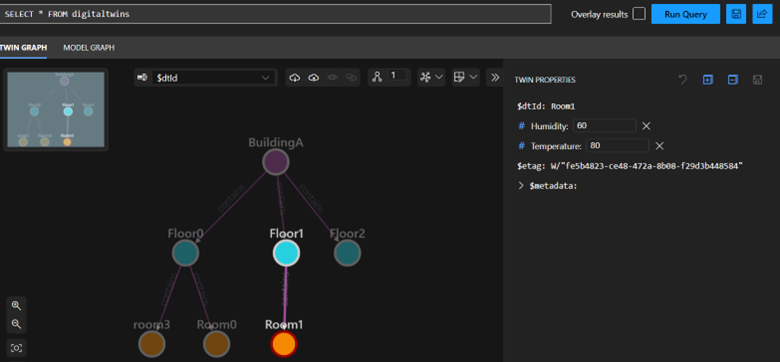

Here Json needs to start with dtmi with displayname as ‘Building’, next the only property of this interface is Date, It has relationship with Floor. Most important is DisplayName.

Here Json needs to start with dtmi with displayname as ‘Floor’, next properties of this interface is OwnershipUser and OwnershipDeparment, It has relationship with Room

Here Json needs to start with dtmi with displayname as ‘Room, next the only property of this interface is Temperature and Humidity, It has no further relationship
Make sure you use DTDL validator while creating these Json files
https://learn.microsoft.com/en-us/samples/azure-samples/dtdl-validator/dtdl-validator/
Using this json we have multiple ways to create our scenario’s but we will use below xlsx file which has specified data to start with. You can download the excel for building scenario’s from below path:
https://github.com/Azure-Samples/digital-twins-explorer/raw/main/client/examples/buildingScenario.xlsx

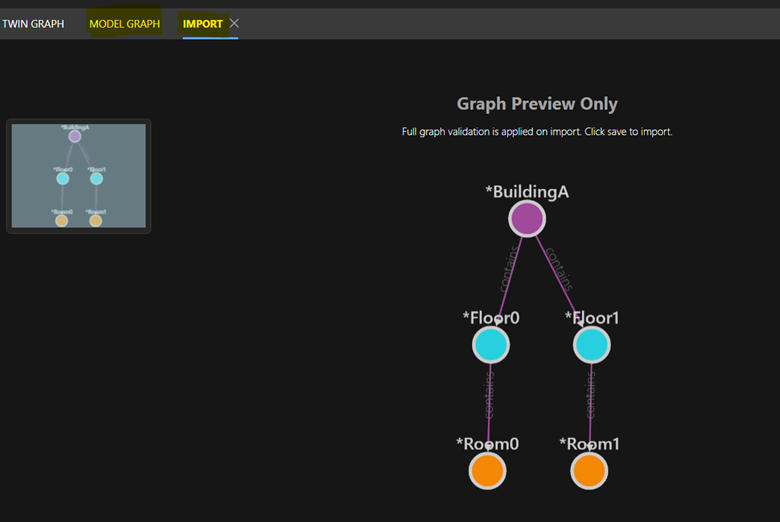
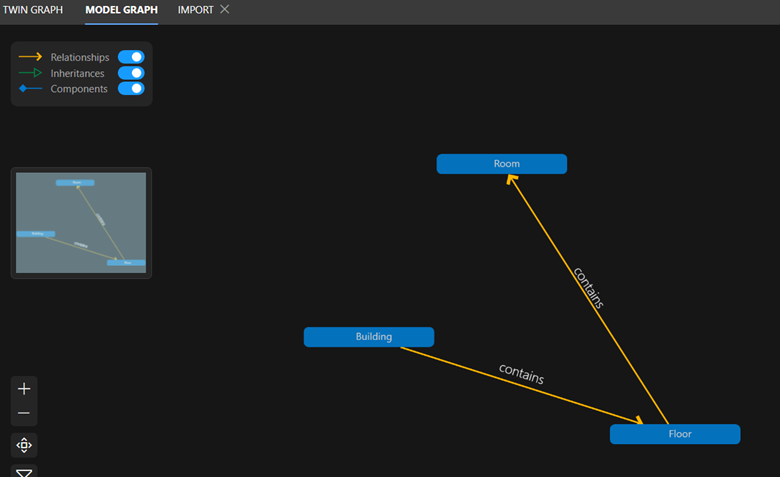
Microsoft understands it will take a lot of efforts for one to create these models and relationships, so to ease the process Microsoft has published a few models such as space, event, document, building, etc so you can reuse them as your start point
https://github.com/WillowInc/opendigitaltwins-building
Here is basic strcture of Azure Digital Twin
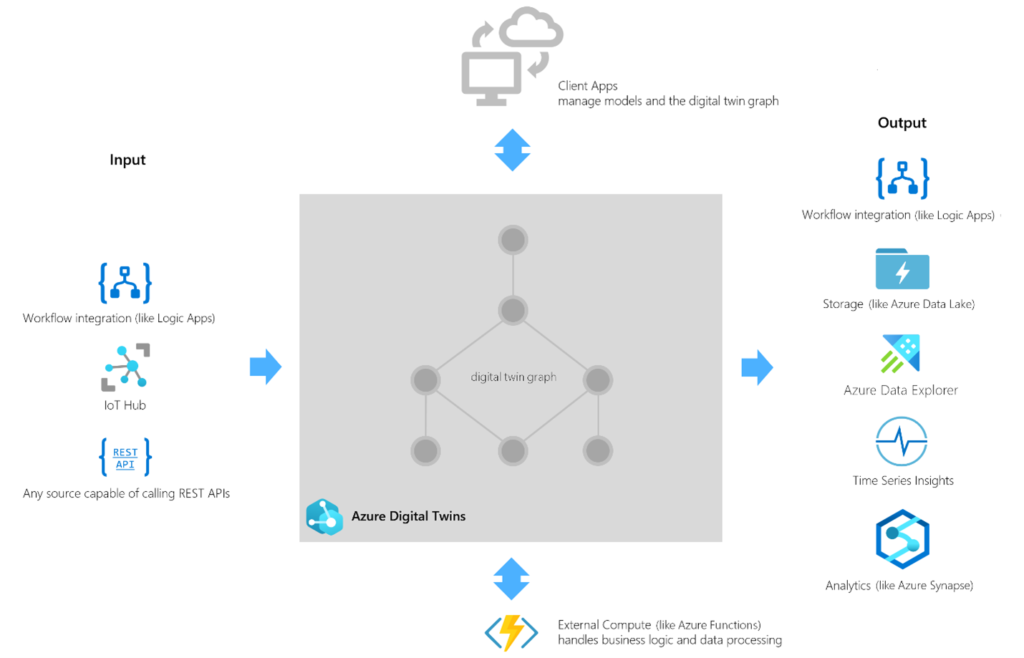
Input : Input can be from Workflows, IOT hub or any rest Api. You can input parameter data manually as well.
Processing : Azure Digital Twin platform process the input based on business logics, understands connections and process data accordingly. Digital twin of real-world sensors can be created to predict and test results based on change in inputs
Output : Using Time Series insights, Azure data explorer and Analytics we can better visualize data and actionable items can be driven from predictions.
Main challenges with ADT are:
- Modelling is difficult and time consuming
- Delay in processing data realtime
- Inter operability between different types of IOT devices and services
- Hard and expensive for existing systems
- Privacy and confidentiality
ChatGPT is back with new Avatar, Try new Bing
Have you taken a peek at the latest iteration of Bing? It’s not just your run-of-the-mill search engine. This revamped version doubles as a conversational companion, capable of fielding inquiries, furnishing comprehensive information, and even igniting your creative flair.
Powered by ChatGPT AI technology, the enhanced Bing delivers top-notch results for everyday queries such as sports scores, stock prices, and weather forecasts. It goes a step further to furnish in-depth explanations as per your preference. The natural language chat interface empowers users to delve into intricate searches, follow up, and fine-tune their queries with startling precision.
Moreover, Bing goes beyond the conventional and acts as a catalyst for creative expression. Leveraging a repertoire of features, it can whip up poems, stories, code snippets, essays, songs, and even celebrity parodies based on your inputs. You are also afforded the opportunity to customize and share these creations with others.
Pairing seamlessly with Microsoft Edge, Bing seamlessly integrates with your virtual browsing companion. Exclusive features such as Collections, Immersive Reader, and Vertical Tabs cater to your organizational needs, while facilitating synchronization of bookmarks, passwords, and settings across your devices.
The new Bing beckons you to bing.com/new, beckoning you to chart a course through its myriad possibilities. With its blend of utility and amusement, this iteration of Bing is poised to guide you in sating your information needs as well as kindling your creative endeavors.
